

Advertisements reinforce the negative portrayal of women through dismemberment. “Women’s bodies are often dismembered ad treated as separate parts” (Center for Media Literacy). This further perpetuates the belief that a woman’s body is not connected to her mind and emotions. A woman’s body is often highlighted in order to grab the viewers’ attention, sexualizing their body parts. “Partial and full nudity have become ordinary in magazine photographs, and accordingly, women’s bodies are four times more likely to be exposed in advertisements than men’s bodies” (Millard & Grant). Now, it has become the norm to see women shown in skimpy clothing plastered on billboards and advertisements. Women come to believe they need to be showing more skin or dress more provocatively to get attention from others. It subtly conveys the message that if a woman has great legs, then who cares who she is. Men are taught that a woman’s body is separate from her mind, leading to the objectification of women.

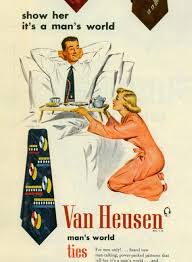

There is a double standard when portraying the sexes. Typically shown alone in ads, men are often portrayed as secure, powerful and serious. Women on the other hand are 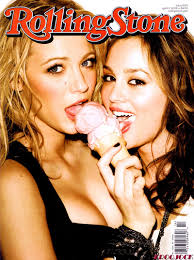 portrayed as playful clowns, “perpetuating the attitude that women are childish and can not be taken seriously” (Center for Media Literacy). Women feel that they need to be liked or accepted by males to feel worthy. Furthermore, they must depend on men to feel good about themselves. So, they look towards magazines for help. Where they are bombarded with thousands of these advertisements as soon as they flip to the first page, feeding
portrayed as playful clowns, “perpetuating the attitude that women are childish and can not be taken seriously” (Center for Media Literacy). Women feel that they need to be liked or accepted by males to feel worthy. Furthermore, they must depend on men to feel good about themselves. So, they look towards magazines for help. Where they are bombarded with thousands of these advertisements as soon as they flip to the first page, feeding
 into the cycle.
into the cycle.

 Advertisers use subtle ways to reinforce inequality between the sexes. Everyone has been exposed to blatantly offensive advertisements that portray women as sexual toys or victims of violence. One common tactic used to establish superiority is size; men are portrayed bigger and stronger than women, leading women to feel inferior or less powerful as their male counterparts. For instance, in a 2007 advert by Dolce & Gabbana, it shows a woman wearing a corset along with four males dressed in jeans and a shirt. The woman is shown helpless yet seductively pinned down, lying at the male’s feet; while the other men are standing around looking down at her. This is a prime example of how women are portrayed as passive objects among men. Feminist writer and activist, Louise Pennington criticizes, “Representations of women in fashion are inherently misogynistic. Women are represented as objects – increasingly we’re seeing campaigns which depict women as victims of violence and murder” (Huffington Post UK). Furthermore, the woman displayed in the Dolce & Gabbana advertisement was shown lying on the floor, essentially powerless, while the other three men stood above her. The message sent from this advertisement is that men are powerful beings and women should be submissive. Overall, women are shown completely passive or overly sexualized while men are seen as the dominant figu
Advertisers use subtle ways to reinforce inequality between the sexes. Everyone has been exposed to blatantly offensive advertisements that portray women as sexual toys or victims of violence. One common tactic used to establish superiority is size; men are portrayed bigger and stronger than women, leading women to feel inferior or less powerful as their male counterparts. For instance, in a 2007 advert by Dolce & Gabbana, it shows a woman wearing a corset along with four males dressed in jeans and a shirt. The woman is shown helpless yet seductively pinned down, lying at the male’s feet; while the other men are standing around looking down at her. This is a prime example of how women are portrayed as passive objects among men. Feminist writer and activist, Louise Pennington criticizes, “Representations of women in fashion are inherently misogynistic. Women are represented as objects – increasingly we’re seeing campaigns which depict women as victims of violence and murder” (Huffington Post UK). Furthermore, the woman displayed in the Dolce & Gabbana advertisement was shown lying on the floor, essentially powerless, while the other three men stood above her. The message sent from this advertisement is that men are powerful beings and women should be submissive. Overall, women are shown completely passive or overly sexualized while men are seen as the dominant figu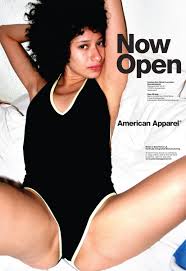 res.
res.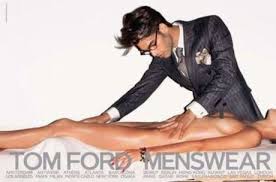
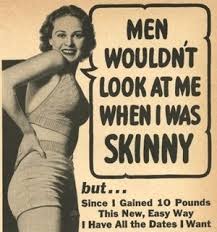
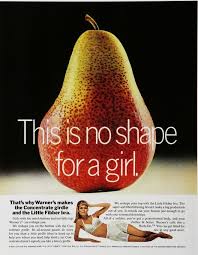 The exposure to advertisements has a signifiant effect on women, and the stakes are often more than just deciding whether or not to buy a certain product. Women, in particular can suffer some serious psychological blows from the subtle pervasive effects of ads aimed towards them. “One out of every four female college students engages in unhealthy means of controlling their weight’’ (Vaux, Demand Media). This comes as no surprise because advertisements depict excessively thin women, most of which are unhealthy and underweight. These images are shown regardless of whether or not they are trying to sell weight loss products. This can contribute to the development of eating disorders among young girls and women. “Long term effects have been discovered of people who have fallen victim to faulty unrealistic images in the media and have suffered from issues such as: depression, self-imposed isolation, low self-esteem, feelings of inadequacy and alienation, e
The exposure to advertisements has a signifiant effect on women, and the stakes are often more than just deciding whether or not to buy a certain product. Women, in particular can suffer some serious psychological blows from the subtle pervasive effects of ads aimed towards them. “One out of every four female college students engages in unhealthy means of controlling their weight’’ (Vaux, Demand Media). This comes as no surprise because advertisements depict excessively thin women, most of which are unhealthy and underweight. These images are shown regardless of whether or not they are trying to sell weight loss products. This can contribute to the development of eating disorders among young girls and women. “Long term effects have been discovered of people who have fallen victim to faulty unrealistic images in the media and have suffered from issues such as: depression, self-imposed isolation, low self-esteem, feelings of inadequacy and alienation, e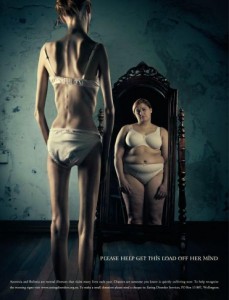 ating disorders, and drug use” (Tkarrde). Women come to believe that what they see is desirable and what attracts others. The anxiety of trying to look a certain way can create a negative self image and poor mental health. In addition, the National Eating Disorders Association found that “Americans spend over $40 billion on dieting and diet-related products each year.” It is the result of body dissatisfaction in our western society. This dissatisfaction occurs when one begins to flip through a fashion magazine and encounters advertisements on weight loss products, tips and “special” diets.
ating disorders, and drug use” (Tkarrde). Women come to believe that what they see is desirable and what attracts others. The anxiety of trying to look a certain way can create a negative self image and poor mental health. In addition, the National Eating Disorders Association found that “Americans spend over $40 billion on dieting and diet-related products each year.” It is the result of body dissatisfaction in our western society. This dissatisfaction occurs when one begins to flip through a fashion magazine and encounters advertisements on weight loss products, tips and “special” diets.







 into the cycle.
into the cycle.






